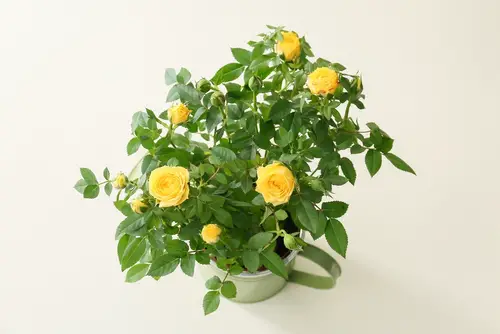White spots on rose leaves are a common problem faced by gardeners and rose enthusiasts. These spots can be caused by various factors, including fungal diseases, pests, and environmental conditions. If left untreated, white spots can weaken the plant, reduce its productivity, and even kill it.
Understanding the causes of white spots on rose leaves is crucial to effectively addressing the problem. Common causes include powdery mildew, aphids, anthracnose, and the mosaic virus.
Identifying the specific disease or pest responsible for the white spots can help gardeners choose the appropriate treatment solution and preventive measures to keep their roses healthy.
Key Takeaways:
- White spots on rose leaves are a common problem that can be caused by various factors, including fungal diseases, pests, and environmental conditions.
- Identifying the specific disease or pest responsible for the white spots is crucial to choosing the appropriate treatment solution and preventive measures.
- Preventive measures, such as proper plant care and maintenance, can help prevent the occurrence of white spots on rose leaves.
More on this category:
Understanding White Spots on Rose Leaves

White spots on rose leaves are a common problem that many gardeners face. These spots can be caused by various factors, including fungal infections, pests, and viruses. Understanding the causes of white spots on rose leaves is crucial to prevent the problem from recurring and to keep the plants healthy.
Causes of White Spots on Rose Leaves
The most common cause of white spots on rose leaves is powdery mildew, a fungal infection that affects the leaves, stems, and flowers of the plant. Powdery mildew appears as a white powder-like substance on the surface of the leaves, which can eventually cause the leaves to curl and turn yellow.
Another cause of white spots on rose leaves is aphids, small insects that feed on the sap of the plant. These insects secrete a sticky substance called honeydew, which can attract other pests and cause fungal infections.
Anthracnose is another fungal infection that can cause white spots on rose leaves. This disease causes brown spots on the leaves, which eventually turn white and powdery.
Finally, the mosaic virus can also cause white spots on rose leaves. This virus affects the growth of the plant and can cause the leaves to turn yellow and develop white spots.
Prevention and Treatment
Preventing white spots on rose leaves requires proper care and maintenance of the plant. This includes regular watering, fertilization, and pruning to remove dead or infected parts of the plant.
To treat powdery mildew, prune infected leaves and apply a fungicide to the plant. For aphids, use insecticidal soap or neem oil to kill the insects and prevent further infestation.
For anthracnose, prune infected leaves and apply a fungicide to the plant. For the mosaic virus, there is no cure, and infected plants should be removed and destroyed to prevent the spread of the virus to other plants.
White Spots on Rose Leaves – 3 Common Problems
White spots on rose leaves can be caused by various factors, including fungal diseases, insect infestations, and environmental factors. In order to properly treat the white spots, it is important to identify the underlying cause.
1. Fungal Diseases
One of the most common causes of white spots on rose leaves is fungal diseases. Powdery mildew is a fungal disease that can cause white spots on the leaves. The disease is caused by fungal spores that thrive in humid environments.
Overwatering can also contribute to the development of powdery mildew. Crown gall, caused by Agrobacterium tumefaciens, is another fungal infection that can cause white spots on rose leaves.
2. Insect Infestations
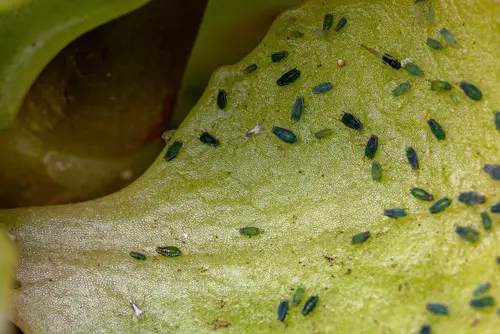
Insect infestations can also cause white spots on rose leaves. Aphids are a particularly common rose pest that can cause white spots. These tiny, pear-shaped, sucking insects love to feed on succulent new growth. Eggs laid by insects can also cause white spots to appear on the leaves.
3. Environmental Factors
Environmental factors such as humidity can also cause white spots on rose leaves. High humidity levels can create a favorable environment for fungal diseases and insect infestations. Overwatering can also contribute to the development of white spots.
In order to properly treat white spots on rose leaves, it is important to identify the underlying cause. Proper care and maintenance of rose bushes can help prevent the occurrence of white spots on leaves. This includes regular pruning, proper watering, and the use of insecticides and fungicides when necessary.
Identifying Specific Diseases and Pests
When it comes to white spots on rose leaves, there are a few specific diseases and pests that could be the culprit. Identifying the issue is the first step in treating it, so let’s take a closer look at some of the most common causes.
1. Powdery Mildew
Powdery mildew is a fungal disease that appears as a white or gray powdery coating on the leaves and stems of the rose. It can also cause leaves to curl and distort. This disease is caused by the fungus Podosphaera pannosa, which thrives in warm, humid conditions.
2. Anthracnose
Anthracnose is another fungal disease that can cause white spots on rose leaves. It typically appears as small, circular spots that gradually enlarge and turn brown. This disease is caused by the fungus Diplocarpon rosae and can weaken the plant over time.
3. Mosaic Virus
Mosaic virus is a viral disease that can cause white or yellow spots on rose leaves. It can also cause leaves to become mottled or distorted. This disease is caused by a virus that is spread by sap-feeding insects like aphids and leafhoppers.
4. Scale Insects
Scale insects are small, oval-shaped pests that can attach themselves to the stems and leaves of roses. They can cause white or yellow spots on the leaves and can also cause the leaves to turn yellow and fall off. Scale insects feed on the sap of the plant and can weaken it over time.
5. Spider Mites
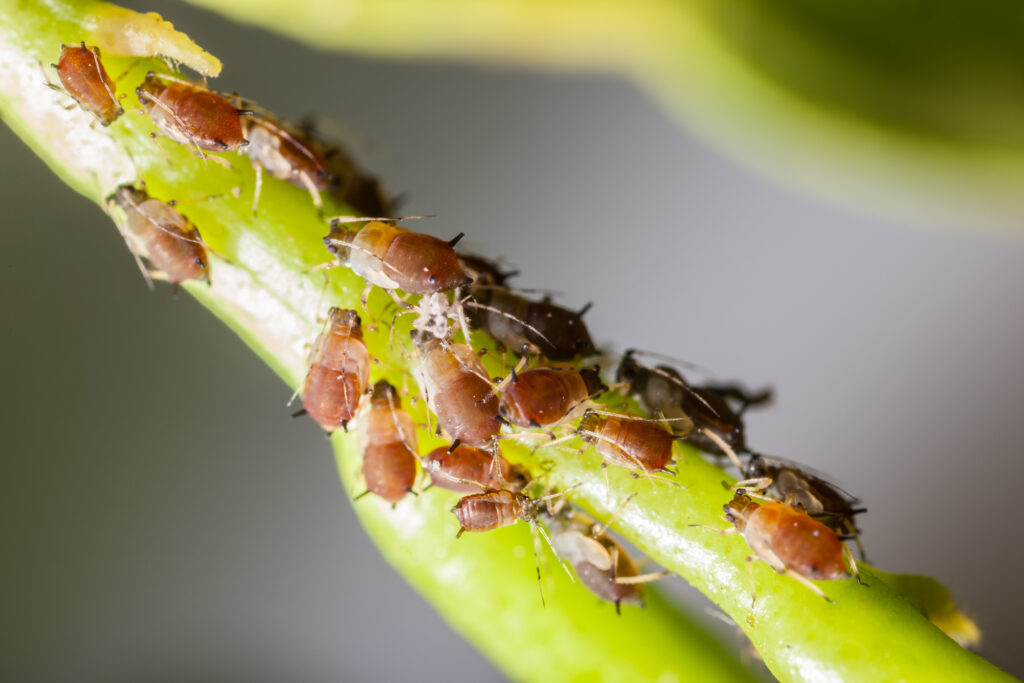
Spider mites are tiny pests that can cause white or yellow spots on rose leaves. They are typically found on the undersides of leaves and can cause the leaves to become stippled or bronzed. Spider mites feed on the sap of the plant and can cause significant damage if left untreated.
Preventive Measures
White spots on rose leaves can be prevented by following a few simple measures. Proper watering, pruning and disposal, maintaining pH levels, and proper air circulation are all essential for preventing white spots on roses.
1. Proper Watering
Overwatering or underwatering can cause stress to the rose plant, making it more susceptible to diseases. It is recommended to water roses deeply once a week, rather than frequent shallow watering.
It is also important to avoid splashing water on the leaves, as this can lead to fungal growth. It is best to water the roses at the base of the plant, using a soaker hose or drip irrigation system.
2. Pruning and Disposal
Pruning is an important aspect of rose care, as it helps to promote healthy growth and prevent diseases. It is recommended to prune roses in early spring, before new growth appears. It is also important to dispose of any diseased plant material, as this can spread the disease to other plants in the garden.
3. Maintaining pH Levels
Maintaining the proper pH level is essential for the health of the rose plant. Roses prefer a slightly acidic soil, with a pH level of 6.0 to 6.5. It is important to test the soil regularly and make adjustments as necessary. Adding organic matter, such as compost or well-rotted manure, can help to maintain the proper pH level.
4. Proper Air Circulation
Proper air circulation is essential for preventing fungal growth on rose leaves. It is recommended to plant roses in a location with good air circulation, and to avoid planting them too close together. It is also important to remove any dead or diseased leaves, as these can harbor fungal spores.
By following these preventive measures, gardeners can help to prevent white spots on rose leaves.
Treatment Solutions
There are several ways to treat white spots on rose leaves, including using fungicides, homemade solutions, and insecticides.
1. Using Fungicides
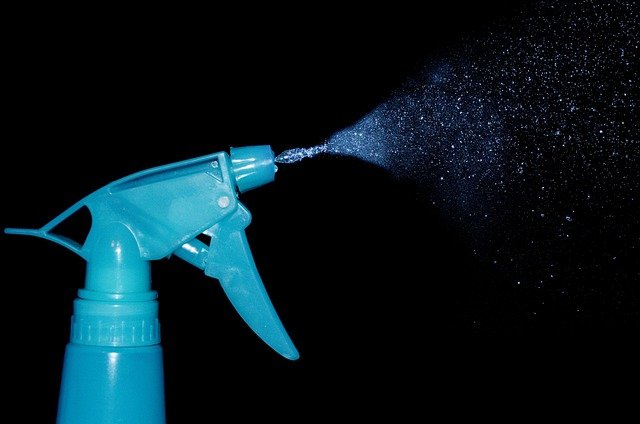
Fungicides are an effective way to treat white spots caused by fungal diseases. One option is to use neem oil fungicide, which can be applied to the leaves every 7 to 10 days.
Another option is to use a baking soda solution, which can be sprayed onto the leaves to help prevent the growth of fungi. In addition, there are several commercial fungicides available that can be used to treat white spots on rose leaves.
2. Homemade Solutions
Homemade solutions can also be effective in treating white spots on rose leaves. One option is to use a dish soap solution, which can be made by mixing a few drops of dish soap with water and spraying it onto the leaves.
Another option is to use a baking soda solution, which can be made by mixing baking soda with water and spraying it onto the leaves. Rubbing alcohol can also be used to clean the leaves and prevent the growth of fungi.
3. Insecticides
Insecticides can be used to treat white spots caused by insect infestations. One option is to use neem oil insecticide, which can be applied to the leaves every 7 to 10 days.
Another option is to use a commercial insecticide, which can be applied to the leaves according to the manufacturer’s instructions. In addition, there are several homemade insecticides that can be used to treat white spots on rose leaves, such as a solution of dish soap and water.
Recovery and Aftercare
Once the white spots on the rose leaves have been treated, it’s important to focus on the recovery and aftercare of the plant. Here are some tips to help your rose plant recover and thrive:
1. Remove Infected Leaves and Stems
To prevent the spread of disease, it’s important to remove any infected leaves and stems from the plant. Use clean pruning shears to cut off any affected areas, making sure to sterilize the shears between cuts to avoid spreading the disease.
2. Provide Proper Care
To help the rose plant recover, make sure it is receiving proper care. This includes regular watering, fertilizing, and pruning. Make sure to follow the specific care instructions for the type of rose plant you have, as different varieties may have different needs.
3. Promote Blooms
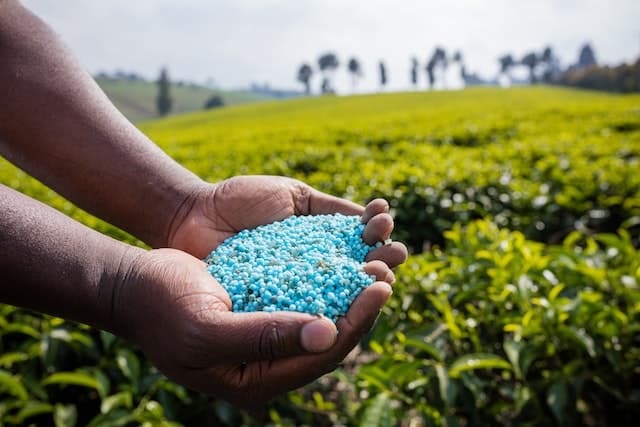
To encourage the plant to produce more blooms, it’s important to deadhead regularly. This involves removing spent flowers from the plant to encourage new growth. Additionally, fertilizing the plant with a balanced fertilizer can also help promote blooming.
4. Monitor for Signs of Disease
Even after treatment, it’s important to monitor the rose plant for any signs of disease. Keep an eye out for any new white spots, as well as other symptoms such as yellowing leaves or wilting. Early detection and treatment can help prevent the spread of disease and keep your rose plant healthy.
By following these tips for recovery and aftercare, you can help your rose plant bounce back from white spot disease and continue to thrive as a beautiful flowering plant.
Impact on Other Garden Elements
1. Effect on Pollinators
White spots on rose leaves can have negative consequences on pollinators such as bees and butterflies. Powdery mildew, one of the common causes of white spots on rose leaves, can affect the flower quality and nectar production of roses.
This can lead to a reduction in the number of pollinators visiting the garden, which can have a knock-on effect on other plants that rely on these pollinators for their reproduction. It is therefore important to address the issue of white spots on rose leaves promptly to prevent any negative impact on pollinators.
2. Influence on Other Plants
White spots on rose leaves can also have an influence on other plants in the garden. Powdery mildew, for example, can spread from roses to other plants in the vicinity. This can result in the weakening of these plants and a reduction in their overall health.
It is therefore important to take measures to prevent the spread of powdery mildew to other plants in the garden. This can be achieved by removing any infected leaves or plants and by ensuring adequate spacing between plants to allow for proper airflow.
3. Role of Predators
In some cases, white spots on rose leaves can attract predators such as birds and chickens. These predators can be beneficial in controlling other pests in the garden such as mealybugs.
However, it is important to note that excessive predation can have a negative impact on the overall health of the garden. It is therefore important to strike a balance between the benefits of predator control and the potential negative impact on the garden.
Frequently Asked Questions
How do you treat powdery mildew on roses?
To treat powdery mildew on roses, it is recommended to use fungicides that contain ingredients such as trifloxystrobin, myclobutanil, or tebuconazole.
These fungicides are effective in treating powdery mildew on roses. It is important to follow the instructions on the label carefully when using any fungicide.
What are the symptoms of rose powdery mildew?
The symptoms of rose powdery mildew include white or gray powdery spots on the leaves, stems, and buds of roses. The spots may later turn yellow or brown and cause the leaves to curl and become distorted. Infected leaves may also fall off prematurely.
What is the disease cycle of powdery mildew on roses?
Powdery mildew on roses is caused by a fungal pathogen that thrives in warm, humid environments. The disease cycle starts when the spores of the fungus land on the leaves of the rose plant.
The spores then germinate and form a mycelium that spreads across the surface of the leaf. The mycelium produces more spores, which are then dispersed by the wind to other parts of the plant or to neighboring plants.
What are some natural remedies for powdery mildew on roses?
Some natural remedies for powdery mildew on roses include spraying the plant with a mixture of water and baking soda, neem oil, or milk. These remedies can help to control the spread of the disease and prevent further damage to the plant.
However, it is important to note that natural remedies may not be as effective as fungicides.
How do you prevent powdery mildew on roses?
To prevent powdery mildew on roses, it is important to maintain good plant hygiene. This includes removing any infected leaves or plant debris from around the plant.
It is also important to water the plant at the base and avoid getting the leaves wet. Proper pruning and spacing of the plants can also help to improve air circulation around the plant, which can reduce the risk of powdery mildew.
What are rose slugs and how do you get rid of them?
Rose slugs are the larvae of sawflies and can cause damage to the leaves of roses. They are small, greenish-yellow caterpillar-like insects that feed on the underside of the leaves, leaving behind a skeletonized leaf.
To get rid of rose slugs, it is recommended to prune the affected leaves or use insecticidal soap or neem oil to control the population.

Hey, I’m Lisa and I’ve been an avid gardener for over 30 years. I love writing, talking and living in the garden! Feel free to connect with me on my socials below

